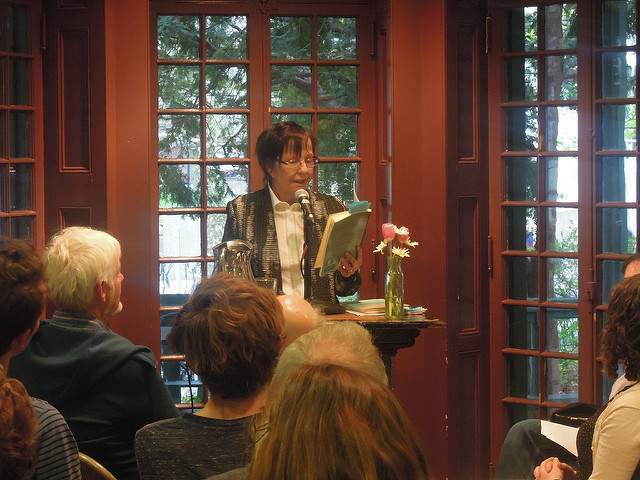Like language, poetry is fluid and alive. It evolves, breaks the rules and turns into something new. Just as scientists have thought experiments (Albert Einstein often did this), writers participate in experimental literature. Experimental poetry is a product of modernist and postmodernist poetry. It explores and emphasizes innovation. Individuals who write experimental poetry don’t always write with a conscious awareness of where a work fits into an aesthetic range. The words follow their own form rather than a standard, and sometimes disregard rules related to language and function.
Experimental Poetry Explained
The best way to understand experimental poetry is to see and read it. In “Advent,” Rae Armantrout writes:
In front of the craft shop,
a small nativity,
mother, baby, sheep
made of white
and blue balloons.
*
Sky
god
girl.
Pick out the one
that doesn’t belong.
*
Some thing
close to nothing
flat
from which,
fatherless,
everything has come.
An example of experimental poetry at its finest, Armantrout takes the notion of stanzaic lyrics, and dismantles and reassembles them. She turns them inside out to create productive arrangements from small groups of phrases.
Reading experimental poetry is like listening to impromptu freestyle jazz—the good kind that you only hear late at night at jazz clubs or during a musician’s private practice sessions. The words are original, daring and sometimes stunning. The forms are more organic, loose and spontaneous, as the words are a product of the subject and the poet’s feelings as she writes. The words are often the first thoughts, the best thoughts.
History of Experimental Poetry
Compared to sonnets and lyrical poems—classical forms—experimental poetry and literature is a relatively new, evolving genre. Its earliest form dates back to Laurence Sterne’s The Life and Opinions of Tristram Shandy, Gentlemen in 1759. About a century-and-a-half later, in the 1910s, artistic experimentation blew into full force. Often inspired by jazz and abstract expressionist painting, American and European writers began experimenting with poetic forms as they ushered in the modernist movement. Avant-garde movements also largely contributed to evolution of experimental poetry, including Dadaism, futurism and surrealism.
After the 1930s, experimental literature faded from public view until the 1950s and -60s, when uncensored freedom became more appreciated. This is around the same time that Charles Olson, who is associated with the Black Mountain School in North Carolina, developed his theory of projective verse,—an open form of poetry based on the spontaneity of breath pauses and typewriter lines. On the West Coast, the San Franciscan School’s nature-focused poems and anti-establishment yet patriotic beat poetry gained national recognition.
Experimental poetry that came out of the New York School demonstrated the most formal education of any group, as New York City was the birthplace of Abstract Expressionism, which largely inspired experimental poetry. One such writer includes Jean Valentine, whose lyrical poems are both personal and political as she tries to make sense of the unconscious and invisible. Valentine states that as she writes, she pays attention to the sounds of her words. If they don’t sound alive in a draft, she takes them out.
Today’s contemporary experimental writers demonstrate many of the qualities seen in works from the 1960s. Their works, however, tend to have more irony and humor. They tend to be more accessible and are sometimes more emotionally deflating. Elaine Equi is a masterful contemporary experimental poet who writes for literary and non-literary audiences. Much of her inspiration comes from her observations of others, her life and pop culture.
Experimental poetry isn’t necessarily poetry that breaks the rules. It’s poetry with its own borders and boundaries. Rather than haven an antagonistic engagement with literature, as some view it, experimental poetry has an alternative engagement with convention. There’s nothing wrong with a little experimentation. Grab a pen and see what words flow from your fingers.

